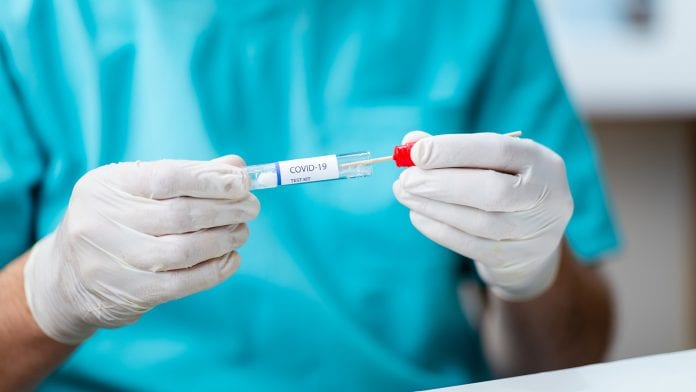
Detecting COVID-19 could be improved with the addition of a simple processing step for saliva samples, which would eliminate the challenges of nasopharyngeal testing and facilitate mass surveillance.
The standard nasopharyngeal swab (NPS) samples that are used to test for COVID-19 pose several challenges, including exposure risk to healthcare workers. Saliva samples are easier to collect but can be mixed with mucus or blood, and some studies have found they produce less accurate results. Now, a team of researchers has found that a protocol that processes the saliva samples with a bead mill homogeniser before PCR testing results in higher sensitivity compared to NPS samples.
Their protocol appears in The Journal of Molecular Diagnostics.
Saliva testing
In the first phase of the study (protocol U), 240 matched NPS and saliva sample pairs were tested prospectively for SARS-CoV-2 RNA by RT-PCR, and in the second phase (SalivaAll), 189 matched pairs, including 85 that had been previously evaluated with protocol U, were processed in an Omni bead mill homogeniser before RT-PCR testing.
A further study was conducted with samples with both protocol U and SalivaAll to determine if bead homogenisation would affect the clinical sensitivity in NPS samples.
Finally, a five-sample pooling strategy was evaluated. 20 positive pools containing one positive and four negative samples were processed with the Omni bead homogeniser before pooling for SARS-CoV-2 RT-PCR testing and compared to controls.
In Phase I, 28.3% of samples tested positive for SARS-CoV-2 from either NPS, saliva, or both. The detection rate was lower in saliva compared to NPS. In Phase II, 50.2% of samples tested positive for SARS-CoV-2 from either saliva, NPS, or both.
The team demonstrated that the detection rate was higher in saliva compared to NPS samples (97.8% compared to 78.9%). Of the 85 saliva samples tested with both protocols, the detection rate was 100% for samples tested with SalivaAll and 36.7% with protocol U.
Lead investigator Ravindra Kolhe, MD, PhD, Department of Pathology, Medical College of Georgia, Augusta University, Augusta, GA, USA, said: “Saliva as a sample type for COVID-19 testing was a game changer in our fight against the pandemic. It helped us with increased compliance from the population for testing along with decreased exposure risk to the healthcare workers during the collection process.”
Testing sensitivity
Dr Kolhe observed that the underlying issues associated with lower sensitivity of saliva to RT-PCR testing could be attributed to the gel-like consistency of saliva samples, which made it difficult to accurately pipet samples into extraction plates for nucleic acid extraction.
He highlights that the addition of the homogenisation step rendered the saliva samples to uniform viscosity and consistency, making it easier to pipet for the downstream assay.
Furthermore, the team successfully validated saliva samples in the five-sample pooling strategy, with the pooled test results demonstrating a positive agreement of 95%, and the negative agreement was found to be 100%.
“Monitoring SARS-CoV-2 will remain a public health need,” Dr Kolhe said. “The use of a non-invasive collection method and easily accessible sample such as saliva will enhance screening and surveillance activities and bypass the need for sterile swabs, expensive transport media, and exposure risk, and even the need for skilled healthcare workers for sample collection.”










